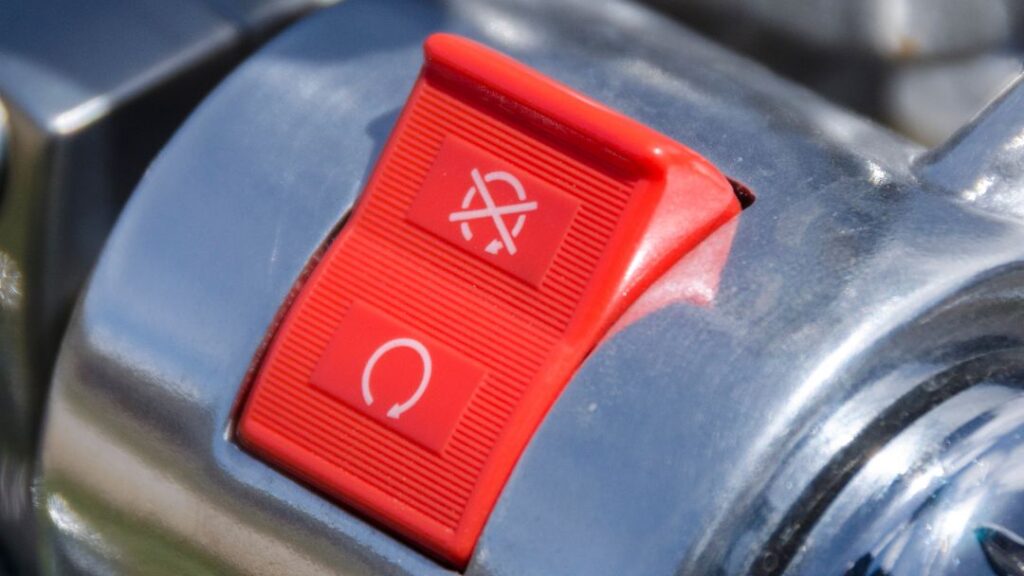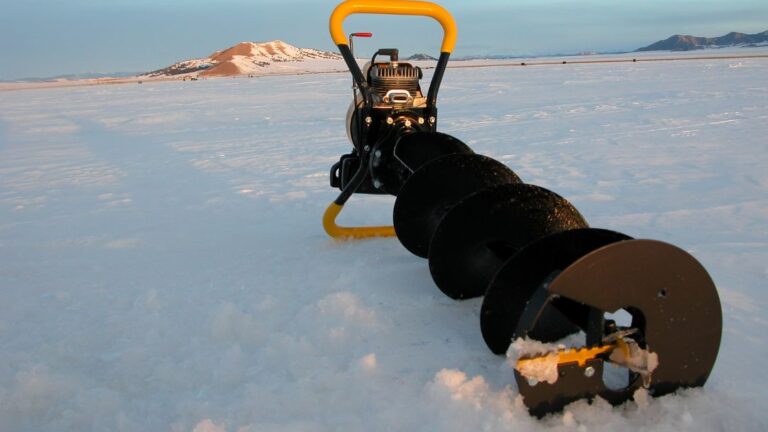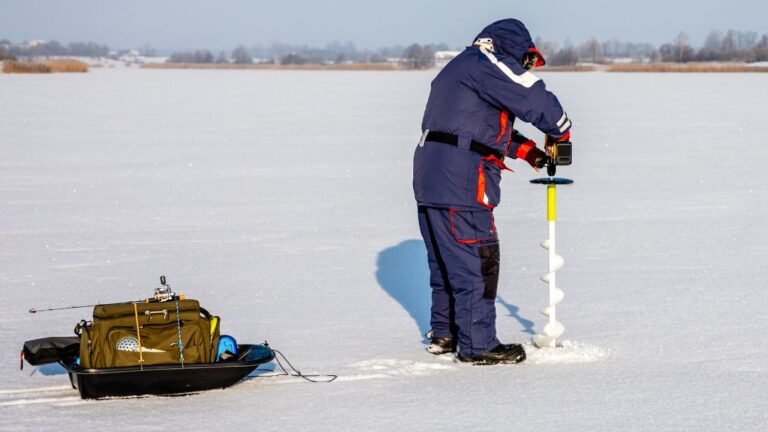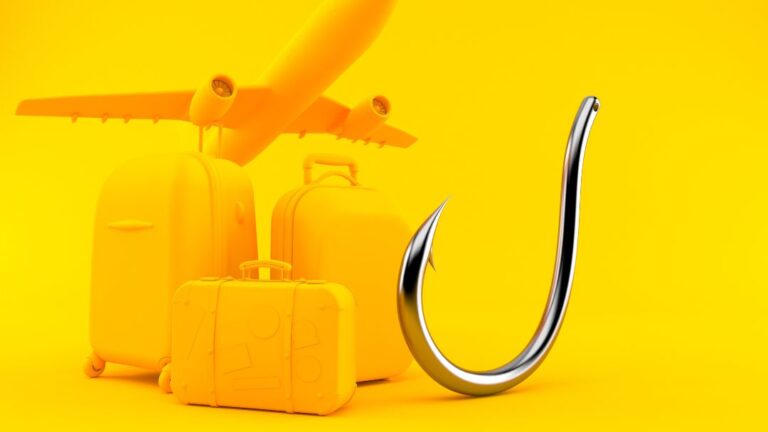3 Critical Reasons to Install a Boat Kill Switch!
Three reasons for having a boat kill switch are safety, legal requirements, and preventing accidents. Boat kill switches ensure the safety of passengers and prevent accidents by shutting off the engine if the operator falls overboard.
They are also a legal requirement in many jurisdictions to prevent operatorless boats from endangering others. By using a boat kill switch, operators can prevent accidents and comply with regulations, ensuring a safer boating experience.
The Importance Of Boat Kill Switches
When it comes to boating, safety should always be a top priority. One crucial safety measure that every boat operator should adhere to is the use of a boat kill switch.
These small devices may appear inconspicuous, but they play a significant role in preventing accidents and ensuring the safety of both operators and passengers.
Boat Kill Switches Provide Essential Safety Measures
Boat kill switches are designed to stop the boat’s engine if the operator is suddenly thrown out of the helm position or becomes incapacitated in any way.
By simply attaching the kill switch lanyard to their wrist or clothing, the operator can ensure that if they are unexpectedly thrown from the helm, the engine will automatically shut off.
This immediate action can prevent the boat from continuing on an uncontrolled path, thereby avoiding potential collisions with other watercraft or obstacles.
Not only do boat kill switches provide a sense of security and peace of mind, but they also serve as a crucial safety feature that can save lives. Just like wearing a seatbelt while driving, using a boat kill switch should be an instinctive habit for every boater.
Prevents Accidents And Injuries
Accidents on the water can happen in the blink of an eye. A sudden wave, a sharp turn, or even a slight distraction can lead to a boater losing their balance and falling overboard.
Without a functioning boat kill switch, the boat’s engine will continue to run, posing an enormous danger to individuals in the water. The spinning propeller can cause severe injuries or even fatalities, further emphasizing the critical need for kill switches.
By having a boat kill switch properly installed and activated, accidents can be mitigated. The engine’s instant shutdown reduces the risk of anyone in the water being struck by the boat’s propeller, giving them a better chance of staying safe until help arrives.
It is a simple yet powerful safety measure that every responsible boat operator must prioritize.
Ensures Operator And Passenger Safety
Boating should be a fun and enjoyable experience for everyone on board. However, without adequate safety measures in place, it can quickly turn into a hazardous situation. Boat kill switches are not only for the operator but also for the passengers who trust their safety to the person in control.
Imagine a scenario where the operator is suddenly thrown from the helm due to a sudden jolt or a collision. Without a functioning kill switch, the boat will continue to move forward, potentially tossing passengers overboard or crashing into other vessels. The use of a boat kill switch minimizes these risks by immediately shutting down the engine, preventing any further potential harm or damage.
In conclusion, boat kill switches are a vital safety feature that every boater should prioritize. By providing a sense of security, preventing accidents and injuries, and ensuring the safety of both operators and passengers, these small yet powerful devices play a significant role in keeping our waterways safe.
So remember, before heading out on your next boating adventure, always attach and activate your boat kill switch to protect yourself and those on board.

Legal Requirements For Boat Kill Switch Installation
Ensuring the safety of everyone on board should be a top priority for any boater. That’s why understanding the legal requirements for boat kill switch installation is crucial.
Not only will it help you stay compliant with boating regulations and laws, but it will also help you avoid fines and penalties that could result from non-compliance.
Boating Regulations And Laws
Boating regulations and laws vary from one jurisdiction to another, but many of them require the use of a boat kill switch for certain types of vessels. These regulations are in place to minimize accidents and promote boating safety.
Whether you are operating a motorized boat or personal watercraft, it’s important to check the specific boating regulations in your area to determine if a boat kill switch is required.
Mandates For Boat Kill Switch Usage
When it comes to boat kill switches, regulations often mandate their usage in specific situations. These mandates are typically enforced to protect the operator, passengers, and others in the water.
For example, in many jurisdictions, boat operators are required to use a kill switch if they are traveling at high speeds, participating in water sports, or operating on certain waterways. Failure to comply with these mandates could result in serious consequences.
Fines And Penalties For Non-compliance
Failure to install or use a boat kill switch as required by the local boating regulations can result in fines and penalties. The exact penalties can vary widely depending on the jurisdiction and the severity of the violation.
In some cases, a boat operator may receive a warning for non-compliance during the first offense, but subsequent violations can lead to substantial fines and even the suspension of boating privileges. It’s essential to understand the potential consequences of non-compliance to prevent any legal issues down the line.
Overall, recognizing and adhering to the legal requirements for boat kill switch installation is crucial for any responsible boater. By staying compliant with boating regulations and laws, following mandates for boat kill switch usage, and avoiding fines and penalties for non-compliance, you can enjoy a safe and worry-free boating experience.
How Boat Kill Switches Work
Understanding the mechanics of boat kill switches is crucial for every boater’s safety. These essential devices provide a reliable means of controlling the engine in emergency situations.
By cutting off the engine’s power when necessary, they can prevent accidents, injuries, and even fatalities. In this section, we will explore the activation and deactivation methods of boat kill switches, as well as an overview of the different types available.
Understanding The Mechanics Of Boat Kill Switches
Boat kill switches, also known as engine cut-off switches, are designed to shut off the engine when the operator is no longer in control of the boat.
This ensures that in the event of a fall overboard or sudden sharp turn, the boat’s engine automatically cuts out, halting the vessel’s movement. The fundamental principle behind a boat kill switch involves a circuit that is disrupted when the operator moves away from the designated position.
Activation and deactivation methods
Boat kill switches can be activated or deactivated through different methods, depending on the type of switch installed. One common type of activation method is through a lanyard attached to the operator’s body.
When the lanyard is worn correctly, it remains connected to the switch, keeping it in an active state. In situations where the operator is separated from the boat, such as falling overboard, the lanyard is pulled away from the switch, instantly breaking the circuit and shutting down the engine.
Another method of activation involves wireless technology, where the operator carries a fob or small transmitter device. The transmitter communicates wirelessly with the boat’s ignition system, allowing the engine to be started or stopped remotely.
This type of boat kill switch offers convenience and ease of use, especially for larger vessels or situations where wearing a lanyard may not be feasible.
Overview Of Different Types Of Boat Kill Switches
Boat kill switches come in various types to suit different boating needs. Below is an overview of the most common types:
| Type | Description |
|---|---|
| Magnetic | Utilizes a magnet that is attached to the operator’s body or clothing, which activates the switch when in proximity. |
| Pressure-sensitive | Relies on pressure exerted by the operator, such as sitting or standing in a specific location, to keep the switch engaged. |
| Wireless | Uses a transmitter or fob to communicate wirelessly with the boat’s ignition system, enabling remote engine control. |
It is essential to select the appropriate boat kill switch type for your specific boating activities and vessel size. Additionally, regular maintenance and inspection of the switch are crucial to ensure its proper functioning and reliability.
Real-life Examples Of Boat Kill Switches In Action
One of the most compelling reasons to equip your boat with a kill switch is the countless real-life examples that highlight the crucial role these devices play in ensuring safety on the water.
The following stories underscore the importance of having a boat kill switch in place while you are enjoying your time out on the open seas.
True Stories Of Accidents And Fatalities Without Boat Kill Switches
Unfortunately, there are numerous instances where accidents and fatalities have occurred due to the absence of a functioning boat kill switch. These devastating incidents serve as stark reminders of the potential dangers involved in boating without this vital safety mechanism.
Case 1: The Tragic Incident
In 2018, a powerful speedboat catapulted a group of friends into tragedy when the boat’s operator was thrown overboard during a sharp turn. Without a connected kill switch, the boat continued to circle at high speeds, leaving the remaining passengers helpless. The catastrophic consequences that followed could have been avoided if a reliable kill switch had been engaged.
Case 2: A Heartbreaking Loss
Another heart-wrenching story unfolded in 2020 when a family’s boating excursion turned into an unimaginable nightmare. While attempting to rescue their child who had fallen overboard, the boat operator inadvertently lost control of the vessel. The absence of a kill switch meant that no automatic engine shutoff occurred, exacerbating the dire situation. This tragic event underscores the importance of having a functioning kill switch at all times.
Success Stories Of How Boat Kill Switches Saved Lives
On the flip side, there are numerous success stories that highlight the life-saving potential of boat kill switches. These inspiring tales demonstrate the effectiveness of this simple device in preventing accidents and preserving precious lives.
Case 1: A Timely Intervention
In 2019, a boater and his companions faced a potentially fatal situation when their vessel experienced a malfunction that caused the throttle to stick at maximum speed. Thanks to the kill switch being properly installed and engaged, the engine immediately shut off, averting disaster and allowing the stranded boaters to safely assess and address the issue.
Case 2: Averted Catastrophe
A testimonial from a seasoned sailor recounts an incident where rough waters caused a boat to lose its balance and nearly capsize. In this critical moment, the boat’s kill switch came into play, shutting off the engine and preventing further damage or potential harm to those on board. This testament to the efficacy of the kill switch serves as a powerful reminder of how essential it is to prioritize safety on the water.
Testimonials From Boat Owners On The Importance Of Kill Switches
Boat owners across the globe have recognized the vital importance of implementing and utilizing kill switches. Their testimonials shed light on the necessity of having this simple yet invaluable safety feature:
“I never truly appreciated the importance of a boat kill switch until a sudden gust of wind threw me off balance during a solo boating trip. Thanks to the kill switch, the engine turned off immediately, preventing the boat from veering out of control and potentially putting my life in danger.”
– John, Connecticut
“When it comes to boating safety, there is no compromise. I’ve had my fair share of close calls, but having a kill switch installed has given me peace of mind. It’s a small investment that can make a world of difference.”
– Sarah, Florida
These firsthand accounts from boat owners reinforce the significance of a kill switch in preventing accidents and preserving lives. Don’t leave safety up to chance – make sure your boat is equipped with a reliable kill switch before embarking on your next adventure.
Steps To Install And Maintain A Boat Kill Switch
A boat kill switch is an essential safety feature for any boat owner or operator. It is designed to prevent accidents and injuries by instantly shutting off the boat’s engine in the event of the operator being thrown overboard.
Installing and maintaining a boat kill switch is crucial to ensure its effectiveness and reliable operation in emergency situations.
Step-by-step Guide For Installing A Boat Kill Switch
- Locate a suitable position near the boat’s helm to install the kill switch. This could be on the dashboard or on the side panel.
- Using a power drill and an appropriate-sized drill bit, create a hole in the chosen location.
- Feed the kill switch’s wiring through the hole and secure it in place using a wrench or pliers.
- Connect the kill switch’s wiring to the boat’s ignition system. Follow the manufacturer’s instructions for proper wire connections.
- Test the kill switch to ensure it is functioning correctly. Start the boat’s engine and activate the kill switch by pulling the lanyard. The engine should shut off immediately.
Necessary Tools And Equipment
Installing a boat kill switch requires a few essential tools and equipment to ensure a proper and secure installation. These include:
- Power drill
- Drill bits
- Wrench or pliers
- Wire connectors
- Electrical tape
- Kill switch with lanyard
Regular Maintenance And Inspection Practices
To ensure the boat kill switch functions reliably, regular maintenance and inspections are necessary. Here are some practices to follow:
- Inspect the kill switch wiring for any signs of wear, corrosion, or damage. Replace any damaged wiring immediately.
- Clean the kill switch contacts and connections to remove any dirt, debris, or moisture that may affect its operation.
- Regularly test the kill switch by starting the boat’s engine and activating the switch. Make sure the engine shuts off as intended.
- Check the lanyard for any signs of wear or fraying. Replace the lanyard if necessary.
- Ensure the kill switch is securely mounted and not loose or wobbly.
By following these steps for installation and maintenance, you can ensure that your boat’s kill switch is in proper working condition, providing you and your passengers with an added layer of safety on the water.
Conclusion
A boat kill switch is a crucial safety feature that every boat owner should have. With its ability to instantly cut off the boat’s engine in case of an emergency, a kill switch can prevent accidents and save lives. It provides peace of mind and ensures that boating remains a fun and enjoyable activity.
Don’t compromise on safety – invest in a boat kill switch today. Stay safe on the water!






